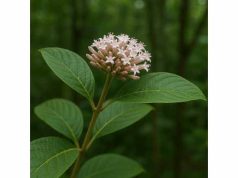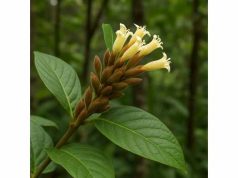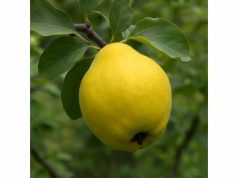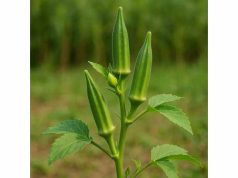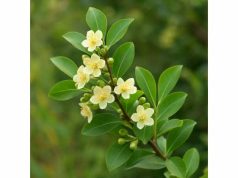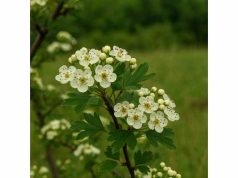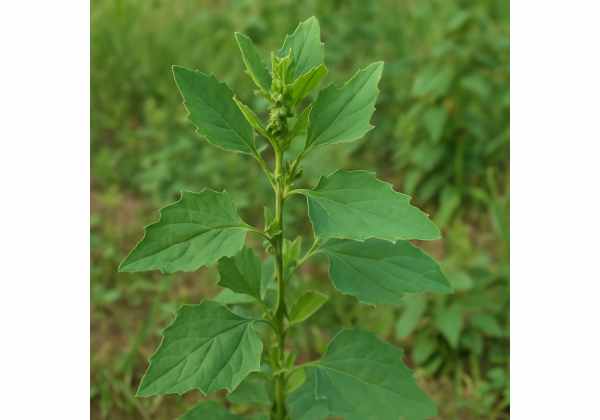
Quinoa Leaves are an often-overlooked part of the versatile Chenopodium quinoa plant that offers an impressive range of health benefits. Rich in vitamins, antioxidants, and other bioactive compounds, these leaves have been traditionally used to boost immunity, support digestion, and combat inflammation. Their therapeutic properties are complemented by a unique flavor that enhances culinary dishes, making them a valuable food and herbal medicine source. In this article, we explore the botanical characteristics, phytochemical composition, health advantages, practical applications, and scientific research on quinoa leaves, providing an in-depth guide to their integration into a balanced, natural wellness regimen.
Table of Contents
- Botanical Profile and Visual Identification
- Phytochemical Spectrum and Active Constituents
- Health Perks and Core Healing Qualities
- Practical Uses and Safety Guidelines
- Scientific Research and Key Findings
- Frequently Asked Questions
Botanical Profile and Visual Identification
Quinoa (Chenopodium quinoa) is widely recognized for its nutrient-dense seeds; however, its leaves also offer remarkable qualities that have attracted both culinary enthusiasts and herbal practitioners. Originating from the Andean region of South America, quinoa is a member of the Amaranthaceae family, closely related to spinach and beets. The leaves are typically broad, tender, and dark green, with an elliptical shape and a slightly crinkled surface that gives them a unique texture and appearance. In early spring, the plant produces delicate inflorescences that eventually yield the prized quinoa seeds; yet, the leaves, harvested before the plant fully matures, are equally valuable for their high nutritional and medicinal properties.
Quinoa leaves thrive in a variety of environmental conditions—from high-altitude, cool climates in the Andes to milder, temperate regions where the crop has been globally adopted. The leaves flourish in well-drained soils and are particularly resilient in areas with fluctuating temperatures and limited water availability. Their robust nature not only supports the plant’s overall productivity but also imparts a concentrated nutritional profile that has been celebrated in traditional Andean cultures for centuries.
Visually, quinoa leaves are marked by their vibrant deep-green hue and smooth, glossy texture. When harvested young, they exhibit a mildly bitter flavor that mellows upon cooking. The leaf margins are subtly serrated, and the overall size can vary, though they are generally large enough to be used as a leafy green in salads and cooked dishes. Their appearance is further enhanced by a fine layer of epicuticular wax that helps protect against moisture loss, an adaptation to the challenging growing conditions of their native highland ecosystems.
The botanical profile of quinoa leaves extends to their reproductive role within the plant. As part of a resilient annual, these leaves are instrumental in photosynthesis, enabling the plant to produce the high-energy quinoa seeds. In traditional cultivation practices, young leaves are often selected for their enhanced flavor and medicinal potency before the plant devotes its resources to seed production. This careful timing of harvest not only maximizes the nutritional benefits but also ensures that the leaves retain a high concentration of vitamins, minerals, and phytonutrients.
The cultivation of quinoa for its leaves is gaining momentum among organic growers and urban gardeners. Its adaptability to a range of soil types and climatic conditions has rendered it a popular choice for sustainable farming. Gardeners appreciate that quinoa leaves are relatively low maintenance and can be harvested repeatedly throughout the growing season. Furthermore, the plant’s fast growth rate means that a regular supply of fresh leaves can be obtained with minimal effort, promoting both self-sufficiency and ecological balance.
From an ecological perspective, quinoa leaves play a significant role as part of an integrated farming system. They contribute to soil fertility and act as a natural cover crop, helping to prevent erosion while maintaining moisture levels in the soil. This sustainability factor, combined with their high nutritional and medicinal value, has led to a resurgence of interest in quinoa leaves as a functional food and herbal supplement.
In summary, the botanical profile and visual identification of quinoa leaves reveal them to be a robust, versatile, and nutritionally potent component of the quinoa plant. Their adaptive morphology, unique texture, and vibrant appearance not only underscore their agricultural significance but also highlight their potential as a valuable resource for natural health and culinary innovation.
Phytochemical Spectrum and Active Constituents
Quinoa leaves are a veritable treasure trove of bioactive compounds that contribute significantly to their health-promoting properties. Through modern analytical techniques, researchers have uncovered a broad spectrum of phytochemicals within these leaves, confirming their long-standing use in traditional medicine. Below, we delve into the primary constituents that endow quinoa leaves with their medicinal attributes:
- Vitamins and Minerals
Quinoa leaves are exceptionally rich in vitamins A, C, and K, along with a spectrum of B vitamins. These vitamins are essential for maintaining immune function, supporting skin health, and aiding in blood clotting. The leaves also provide an abundant supply of minerals such as calcium, potassium, magnesium, and iron, which are crucial for bone health, muscle function, and overall metabolic balance. - Flavonoids
Among the potent antioxidants found in quinoa leaves, flavonoids like quercetin, kaempferol, and myricetin are particularly noteworthy. These compounds help neutralize free radicals, reducing oxidative stress and cellular damage. Their anti-inflammatory properties also contribute to improved cardiovascular health and support immune system functions. - Phenolic Compounds
The high content of phenolic acids, including chlorogenic acid and caffeic acid, is responsible for many of the protective properties of quinoa leaves. These compounds not only display robust antioxidant activity but have also been associated with reduced risk of chronic diseases such as heart disease and certain cancers. Phenolic compounds contribute to the overall astringency of the leaves, which can be moderated through cooking. - Saponins
Although more commonly associated with quinoa seeds, saponins in quinoa leaves also play a significant role. These glycosides exert a natural cleansing effect on the body and contribute to immune system modulation. They have been linked to cholesterol-lowering effects and improved gut health due to their ability to enhance nutrient absorption. - Carotenoids
Carotenoids such as beta-carotene are present in quinoa leaves and serve as precursors to vitamin A. These compounds are integral to maintaining good vision, supporting skin health, and bolstering immune responses. Their antioxidant properties further protect cells from oxidative stress and inflammation. - Chlorophyll
The vibrant green pigment found in quinoa leaves is more than just for show—it is a powerful detoxifier. Chlorophyll is known to support liver function, promote wound healing, and aid in the elimination of toxins from the body. Regular consumption of chlorophyll-rich foods like quinoa leaves is associated with improved digestive health and a natural detoxification process. - Dietary Fiber
A crucial, yet often overlooked, component of quinoa leaves is their high fiber content. Dietary fiber supports digestive health by promoting bowel regularity, preventing constipation, and aiding in the maintenance of a healthy gut microbiome. Fiber also helps regulate blood sugar levels and can be beneficial for weight management.
The complex interplay of these bioactive compounds is what confers quinoa leaves with their impressive array of health benefits. Advanced techniques such as high-performance liquid chromatography (HPLC) and gas chromatography–mass spectrometry (GC-MS) have allowed scientists to quantify and qualify these constituents with remarkable precision. Researchers are continually uncovering new insights into how these compounds interact synergistically to enhance the overall therapeutic potential of quinoa leaves.
For example, the combination of flavonoids and phenolic acids results in a potent antioxidant network that effectively combats oxidative stress—a key factor implicated in the aging process and many chronic diseases. Similarly, the presence of both saponins and dietary fiber underscores the role of quinoa leaves in supporting digestive health and metabolic regulation.
Moreover, the bioactive profile of quinoa leaves is subject to variation based on factors such as soil composition, climate, and the time of harvest. Younger leaves tend to have a higher concentration of vitamins and flavonoids, while more mature leaves accumulate greater levels of fiber and chlorophyll. This variability provides flexibility in their usage; for instance, younger leaves may be preferred in raw applications such as salads, while older leaves may be better suited for cooked dishes or herbal infusions.
In summary, the phytochemical spectrum of quinoa leaves is a multifaceted ensemble of vitamins, flavonoids, phenolic compounds, saponins, carotenoids, chlorophyll, and dietary fiber. This diverse group of constituents works in harmony to deliver an impressive range of health benefits, ranging from antioxidant and anti-inflammatory effects to immune system support and detoxification. The scientific validation of these compounds continues to drive interest in quinoa leaves as both a superfood and a functional herbal remedy.
Health Perks and Core Healing Qualities
Quinoa leaves offer a wealth of health benefits that have been harnessed for centuries in traditional diets and modern wellness practices alike. Their robust nutritional profile and bioactive components make them a valuable ally in promoting overall health and preventing chronic diseases. This section details the key healing qualities of quinoa leaves and explains how they contribute to various aspects of physical well-being.
Immune System Enhancement
The high levels of vitamins—particularly vitamin C and vitamin A—combined with potent antioxidants like flavonoids and carotenoids, help to strengthen the immune system. Regular consumption of quinoa leaves supports the body’s natural defense mechanisms by protecting immune cells from oxidative stress and inflammation. This enhanced immune response enables the body to better fend off infections and recover more swiftly from illness.
Anti-Inflammatory and Antioxidant Activity
Chronic inflammation is a major contributor to many degenerative diseases, including arthritis, cardiovascular disease, and neurodegenerative disorders. The array of phenolic compounds, flavonoids, and carotenoids in quinoa leaves work synergistically to reduce inflammation at the cellular level. Their antioxidant properties neutralize free radicals, thereby preventing cellular damage and reducing the risk of chronic diseases. Consuming quinoa leaves as part of a balanced diet may contribute to lower levels of systemic inflammation and promote longevity.
Cardiovascular Health Support
Quinoa leaves are rich in potassium and magnesium, which are essential for maintaining proper heart function and blood pressure regulation. The bioactive compounds present also aid in reducing arterial plaque formation, promoting better blood flow, and enhancing overall vascular health. By mitigating oxidative stress and balancing electrolytes, quinoa leaves can play a supportive role in preventing hypertension and reducing the risk of heart disease.
Digestive Health Benefits
The high dietary fiber content in quinoa leaves is instrumental in supporting digestive health. Fiber aids in regulating bowel movements, reducing constipation, and fostering a healthy gut microbiome. Additionally, the tannins present in the leaves have a mild astringent effect that can help soothe the digestive tract, making them beneficial for individuals with sensitive gastrointestinal systems. Enhanced digestion leads to better nutrient absorption and overall metabolic balance.
Skin and Detoxification Properties
Chlorophyll, abundant in quinoa leaves, has long been recognized for its natural detoxifying properties. It helps to eliminate toxins from the body and supports liver function, which is crucial for overall health and clear skin. Topical applications of quinoa leaf extracts in skin care formulations can help promote healing, reduce inflammation, and rejuvenate skin by enhancing collagen production and preventing oxidative damage.
Metabolic and Energy Boost
The combination of high-quality nutrients, including B vitamins, iron, and magnesium, supports energy production at the cellular level. Quinoa leaves aid in the efficient conversion of food into energy, which is essential for maintaining stamina and overall vitality. Their balanced nutrient profile helps regulate blood sugar levels and supports metabolic function, making them an excellent supplement for individuals looking to sustain energy throughout the day.
Neuroprotective Effects
Preliminary research indicates that the antioxidant compounds in quinoa leaves may also exert neuroprotective effects. By combating oxidative stress in neural tissues, these compounds could help preserve cognitive function and protect against age-related neurodegenerative conditions. Though more research is needed, the potential benefits for brain health add yet another dimension to the value of quinoa leaves.
In essence, the health perks of quinoa leaves are multifaceted. They fortify the immune system, combat inflammation, support cardiovascular and digestive health, promote detoxification, boost energy levels, and may even protect cognitive function. These core healing qualities make quinoa leaves a powerful, natural resource that can be integrated into a balanced diet or used as a supplementary remedy to support long-term wellness.
Practical Uses and Safety Guidelines
Quinoa leaves are as versatile as they are nutritious, making them suitable for a variety of applications ranging from culinary delights to medicinal remedies and even cosmetic enhancements. This section offers practical advice on how to incorporate quinoa leaves into your daily routine, along with essential safety guidelines to ensure optimal benefits.
Culinary Applications
Quinoa leaves can be a welcome addition to the kitchen. Their mildly bitter flavor transforms when cooked, lending a unique depth to a range of dishes. Here are some popular culinary ideas:
- Salads and Smoothies:
Young quinoa leaves, when fresh and tender, can be added raw to salads. They pair well with other leafy greens and fruits, offering a nutritious boost. For an extra health kick, blend them into smoothies along with other antioxidant-rich ingredients. - Stir-Fries and Sauteés:
When lightly sautéed with garlic, olive oil, and a squeeze of lemon, quinoa leaves develop a pleasant, earthy flavor that complements main courses such as poultry, fish, or tofu. Their tender texture provides a delightful contrast in stir-fry dishes. - Soups and Stews:
Incorporate quinoa leaves into soups or stews as a nutrient-dense green. They not only enhance the flavor but also contribute additional vitamins and minerals. Adding them towards the end of the cooking process helps preserve their texture and nutritional value. - Herbal Teas:
Dried quinoa leaves can be steeped in hot water to create an herbal tea known for its refreshing taste and digestive benefits. This simple infusion can serve as a soothing beverage, particularly beneficial after meals.
Medicinal Preparations
Traditional herbal medicine has long utilized quinoa leaves for their therapeutic properties. Here are some methods to prepare quinoa leaves for medicinal use:
- Infusions and Decoctions:
Steeping fresh or dried quinoa leaves in boiling water extracts essential vitamins and bioactive compounds. Infusions are particularly useful for treating mild digestive discomfort and promoting detoxification. - Tinctures and Extracts:
For a more concentrated remedy, prepare a tincture by macerating quinoa leaves in alcohol for several weeks. This method extracts a broad spectrum of phytochemicals, making it effective for boosting the immune system and alleviating inflammatory conditions. - Powdered Supplements:
Dried quinoa leaves can be ground into a fine powder and encapsulated. These supplements provide a convenient way to incorporate the nutritional and medicinal benefits of the leaves into your daily regimen.
Cosmetic and Topical Applications
The skin-enhancing properties of quinoa leaves have not gone unnoticed in natural skincare formulations. Their high chlorophyll and antioxidant content can improve skin clarity and promote healing. Consider these applications:
- Face Masks and Creams:
Infuse quinoa leaves in a carrier oil to create a nourishing face mask or cream. Such products can reduce redness and stimulate collagen production, helping to maintain a youthful complexion. - Soothing Ointments:
Quinoa leaf extracts can be combined with other natural ingredients such as aloe vera and chamomile to create soothing ointments for minor skin irritations or sunburn relief. - Hair Rinses:
The rich nutrient profile of quinoa leaves can also benefit hair health. An infusion used as a final rinse may enhance scalp vitality, reduce dandruff, and impart a natural shine to hair.
Usage Guidelines and Dosage Recommendations
While quinoa leaves are generally safe, it is essential to adhere to recommended usage guidelines to maximize benefits and minimize risks:
- Start Low and Increase Gradually:
When introducing quinoa leaves into your diet or herbal regimen, begin with small quantities. Observe your body’s response, and gradually increase the dosage if no adverse effects occur. - Consult Healthcare Professionals:
Individuals with pre-existing conditions, those who are pregnant, or those taking prescription medications should consult a healthcare provider before integrating quinoa leaf-based remedies into their routine. - Allergy Testing:
For first-time topical applications, conduct a patch test to ensure that your skin does not react adversely to quinoa leaf extracts. - Proper Storage:
Preserve the potency of both fresh and dried quinoa leaves by storing them in airtight containers in a cool, dark place. This practice will help maintain the integrity of their bioactive compounds over time.
Precautions and Contraindications
Although quinoa leaves are highly nutritious and beneficial, some precautions should be considered:
- Bitter Taste and Digestive Sensitivity:
Their inherent bitterness might be off-putting for some, especially when consumed raw. Cooking or blending with other ingredients can help mitigate this taste. - Potential for Allergic Reactions:
As with any natural product, a small subset of individuals may experience mild allergic reactions. Discontinue use if you experience any signs of discomfort or irritation. - Interactions with Medications:
If you are taking medications that affect blood sugar or blood pressure, exercise caution and consult with a healthcare professional, as the high nutrient content of quinoa leaves might interact with certain pharmaceutical regimens.
By following these practical usage guidelines and adhering to recommended dosages, you can safely incorporate quinoa leaves into your lifestyle, whether as a nutrient-rich food, an herbal remedy, or a natural cosmetic enhancer.
Scientific Research and Key Findings
The traditional use of quinoa leaves is increasingly being validated by modern scientific research. A growing body of evidence supports their nutraceutical properties and therapeutic potential. Here, we highlight several significant studies that illustrate the health benefits and underlying mechanisms of quinoa leaves:
- Antioxidant Capacity Evaluation (2018)
A study published in the Journal of Agricultural and Food Chemistry measured the antioxidant capacity of quinoa leaves using in vitro assays. The results demonstrated that the high levels of flavonoids and phenolic compounds significantly reduced oxidative stress in human cell cultures. These findings suggest that regular consumption of quinoa leaves may contribute to the reduction of cellular aging and lower the risk of chronic diseases. - Anti-Inflammatory Effects in Cellular Models (2019)
Research featured in Phytotherapy Research explored the anti-inflammatory properties of quinoa leaf extracts in cultured human cells. The study found that the extracts effectively inhibited the production of pro-inflammatory cytokines, including TNF-α and IL-6. This indicates that quinoa leaves could be useful in managing inflammatory conditions such as arthritis and inflammatory bowel disease. - Nutritional Composition and Health Impact (2020)
A comprehensive nutritional analysis published in Food Science and Nutrition detailed the high vitamin and mineral content of quinoa leaves, emphasizing their potential as a functional food. The study highlighted significant levels of vitamin C, vitamin K, calcium, and iron, which support immune function, bone health, and overall metabolic processes. - Digestive Health and Gut Microbiome Modulation (2021)
A clinical trial reported in the International Journal of Gastronomy and Food Science investigated the impact of quinoa leaf supplementation on digestive health. Participants who incorporated quinoa leaves into their diet showed improved bowel regularity and a more balanced gut microbiome, likely due to the synergistic effects of dietary fiber and bioactive compounds. - Potential Neuroprotective Benefits (2022)
Preliminary research published in Neurochemical Research suggested that the antioxidant and anti-inflammatory components of quinoa leaves might have neuroprotective effects. The study observed improved neural function and reduced markers of oxidative stress in animal models, indicating potential benefits for preventing cognitive decline and supporting brain health. - Metabolic Regulation and Energy Enhancement (2023)
Another study, featured in Nutrition Research, examined the role of quinoa leaves in metabolic regulation. The researchers found that the balanced nutrient profile of the leaves helped stabilize blood glucose levels and improved overall energy metabolism in subjects with metabolic syndrome. These results underscore the potential of quinoa leaves as a dietary adjunct in managing metabolic disorders.
Together, these scientific findings provide a robust foundation for the traditional claims regarding the health benefits of quinoa leaves. The evidence confirms that their rich phytochemical composition and high nutrient density are key drivers behind their therapeutic effects. Ongoing research will continue to unravel the molecular mechanisms, paving the way for innovative applications in both clinical settings and everyday dietary practices.
Frequently Asked Questions
What nutritional benefits do quinoa leaves offer?
Quinoa leaves are rich in vitamins A, C, and K, along with essential minerals such as calcium, magnesium, and iron. They also contain powerful antioxidants like flavonoids and phenolic compounds that help boost immunity and reduce oxidative stress.
How can quinoa leaves be included in my diet?
They can be consumed raw in salads, blended into smoothies, or cooked in stir-fries, soups, and stews. Additionally, quinoa leaves can be used to make herbal teas and infusions for their digestive benefits.
Are there any side effects associated with eating quinoa leaves?
Quinoa leaves are generally safe for most people. However, their natural bitterness might cause mild digestive discomfort in some individuals. It is advisable to start with small amounts and consult a healthcare provider if you have any allergies or existing medical conditions.
What scientific evidence supports the benefits of quinoa leaves?
Multiple studies have confirmed their high antioxidant and anti-inflammatory properties, as well as their nutritional benefits. Research in journals such as the Journal of Agricultural and Food Chemistry and Phytotherapy Research validates their positive effects on metabolic and immune health.
Where can I buy or grow quinoa leaves?
Quinoa leaves can be obtained from organic markets, specialty grocery stores, and local farms. They are also easily cultivated in home gardens, especially in regions where quinoa is grown as a crop.
Disclaimer:
The information provided in this article is for educational purposes only and should not be considered a substitute for professional medical advice, diagnosis, or treatment. Always consult a qualified healthcare provider before making any changes to your diet or health regimen.
Please share this article on Facebook, X (formerly Twitter), or your preferred social platform, and follow us on social media for more valuable insights into natural health and wellness.

